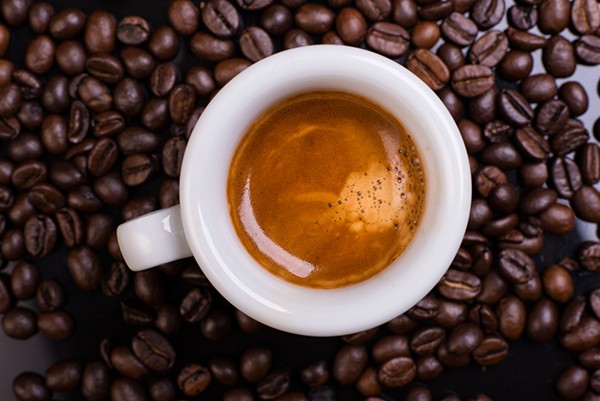Exploring the intricate world of coffee, espresso emerges as a phenomenon that transcends its identity as just a beverage. My first encounter with espresso took place in a quaint Roman café nestled in a narrow alleyway. I watched in amazement as a skilled barista crafted a shot—intense yet delicate—that captivated me instantly. That unassuming cup revealed a profound complexity, sparking a lifelong fascination with the art and science of espresso.
Unlocking the Magic of Espresso: A Coffee Like No Other
Espresso is celebrated for its bold, concentrated flavor and the meticulous care involved in its creation. Prepared by forcing hot water through finely ground coffee under high pressure, this method yields a brew with a distinct richness and depth of flavor.
One of espresso’s most recognizable features is its crema—a golden foam layer that graces the surface of a perfectly pulled shot. The crema is more than a visual indicator; it reflects expert extraction, offering a smooth texture and a subtle sweetness that complements espresso’s inherent bitterness. Together, they create a harmonious and memorable taste experience.
The Origins and Evolution of Espresso Culture
Espresso’s story begins in Italy, where it emerged in the early 20th century. Although Angelo Moriondo patented the first espresso machine in 1884, it was Luigi Bezzera and Desiderio Pavoni who refined the design, revolutionizing coffee preparation. The speed and efficiency of espresso brewing perfectly suited the bustling pace of Italian city life. Over time, espresso bars became cultural hubs, blending coffee with conversation and community.
During my trip to Milan, I witnessed the deep integration of espresso into Italian daily life. For Italians, it’s not just a drink—it’s a ritual, often enjoyed standing at the bar amidst friendly chatter. This communal tradition reflects espresso’s role as a cultural and social cornerstone.
Bringing Authentic Espresso into Your Home
Inspired by my travels, I set out to recreate the espresso experience in my own kitchen. Investing in a high-quality espresso machine allowed me to delve into the art of crafting the perfect shot. Adjusting grind sizes, fine-tuning water temperatures, and mastering the tamping process became a fulfilling journey. Over time, this morning ritual connected me to a tradition rooted in precision and passion.
Espresso as the Canvas for Creative Coffee Beverages
Espresso’s versatility as a base for various coffee drinks highlights its adaptability. From the macchiato, featuring a touch of steamed milk, to the cappuccino’s harmonious blend of espresso, steamed milk, and foam, espresso retains its essence while catering to a range of tastes.

The Relationship Between Beans and Roasting Styles
As my appreciation for espresso deepened, I explored the origins and roasting profiles of coffee beans. The flavor nuances of an espresso shot vary significantly based on bean origins and roasting techniques. Ethiopian beans, for instance, bring bright, fruity notes, while Brazilian beans offer rich, chocolatey undertones. Light roasts emphasize natural bean flavors, whereas darker roasts highlight caramelized, robust profiles.
Supporting Ethical and Sustainable Coffee Practices
With a growing connection to espresso, my awareness of sustainability also increased. I sought out roasters committed to ethical sourcing and environmentally responsible practices. Knowing my daily cup contributes to fair trade and sustainable agriculture adds a layer of satisfaction, linking me to the farmers and regions responsible for producing the beans.
Mastering the Craft of Espresso: Precision Meets Passion
Achieving the perfect espresso shot is an art and a science. A standard shot involves around 7 grams of coffee and an extraction time of 20-30 seconds. Slight changes in variables like grind size, water pressure, or timing can dramatically alter the result, highlighting the precision required for mastery. Though challenging, the reward of a balanced, flawless shot is unparalleled.
Exploring Alternative Brewing Techniques for Espresso
Traditional espresso requires specialized equipment, but alternative methods such as the Moka pot or AeroPress offer convenient ways to achieve espresso-like results. These tools are particularly useful for replicating the bold flavors of espresso during travel or when a machine isn’t available.
Sharing the Joy of Espresso with Others
One of the most rewarding aspects of espresso is sharing it with friends and family. Hosting gatherings and serving a variety of espresso-based beverages allows me to introduce others to its magic. Witnessing someone’s joy as they experience a well-crafted shot for the first time is deeply gratifying.
Expanding Culinary Horizons Through Espresso
My love for espresso has enriched my broader culinary appreciation. Developing a refined palate through espresso tasting has enhanced my ability to detect subtle flavors in food and wine. This deeper sensitivity has elevated my enjoyment of diverse culinary experiences, making each meal more memorable.
:max_bytes(150000):strip_icc()/__opt__aboutcom__coeus__resources__content_migration__serious_eats__seriouseats.com__2018__06__20180613-coffee-vs-espresso-vicky-wasik-3-1500x1125-418fa2a14e7249b18040c2c34bf8569c.jpg)
Conclusion: Espresso—A Love Affair Beyond the Cup
Espresso is far more than a drink; it represents history, culture, craftsmanship, and community. Each cup symbolizes a celebration of life’s simple joys, reflecting the dedication of farmers, roasters, and baristas alike.
As I continue to explore the world of espresso, I find it mirrors the balance of precision and creativity in life itself. Whether enjoyed in a lively café or the quiet of my own home, espresso remains a cherished ritual, embodying the essence of human connection and discovery.
